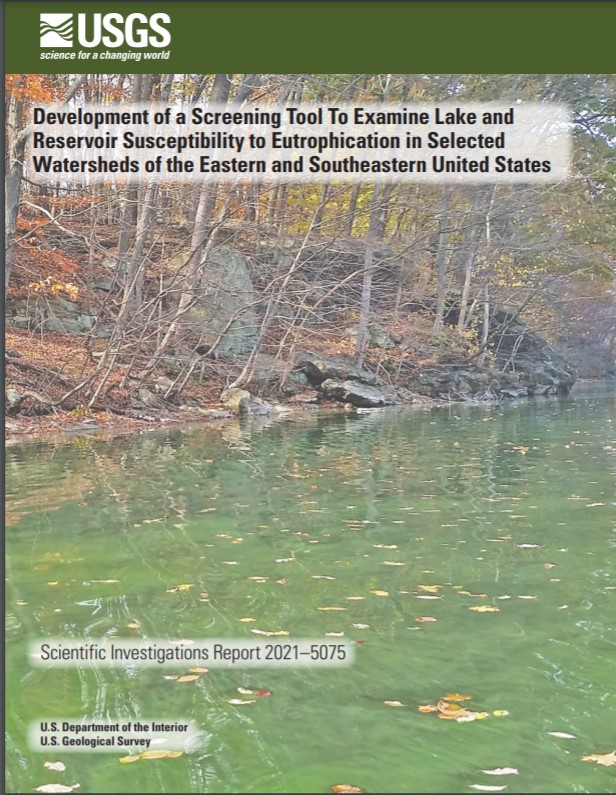
Citation
Green, W. R., A. B. Hoos, A. E. Wilson, and E. N. Heal. 2021. Development of a screening tool to examine lake and reservoir susceptibility to eutrophication in selected watersheds of the eastern and southeastern United States. U.S. Geological Survey Scientific Investigations Report 2021–5075, 59 pages
Abstract
This report describes a new screening tool to examine lake and reservoir susceptibility to eutrophication in selected watersheds of the eastern and southeastern United States using estimated nutrient loading and flushing rates with measures of waterbody morphometry. To that end, the report documents the compiled data and methods (R-script) used to categorize waterbodies by Carlson’s Trophic State Index. Assessments were completed for 232 lakes and reservoirs having a surface area greater than or equal to 0.1 square kilometer in watersheds that drain to the Atlantic and eastern Gulf of Mexico coasts of the United States and in watersheds within the Tennessee River Basin. Waterbodies were categorized by type—natural lakes, headwater reservoirs, and downstream reservoirs—and were assessed independently. Recursive partitioning and the model-based boosting routine were used to create four-node regression trees to group waterbodies into five endpoints from low-to-high measures of Secchi depth, and concentrations of chlorophyll a and microcystin according to shared nutrient loading, flushing rate, and morphometric characteristics. Trophic state designations were assigned based on the average value within each of the five endpoints. An application (procedure) is provided using the tool to examine the susceptibility of a given waterbody of interest to eutrophication. Results of this study can aid water-resource managers in prioritizing lake and reservoir protection and restoration efforts based on the susceptibility of these waterbodies to eutrophication relative to nutrient loading, flushing rate, and morphometric characteristics.